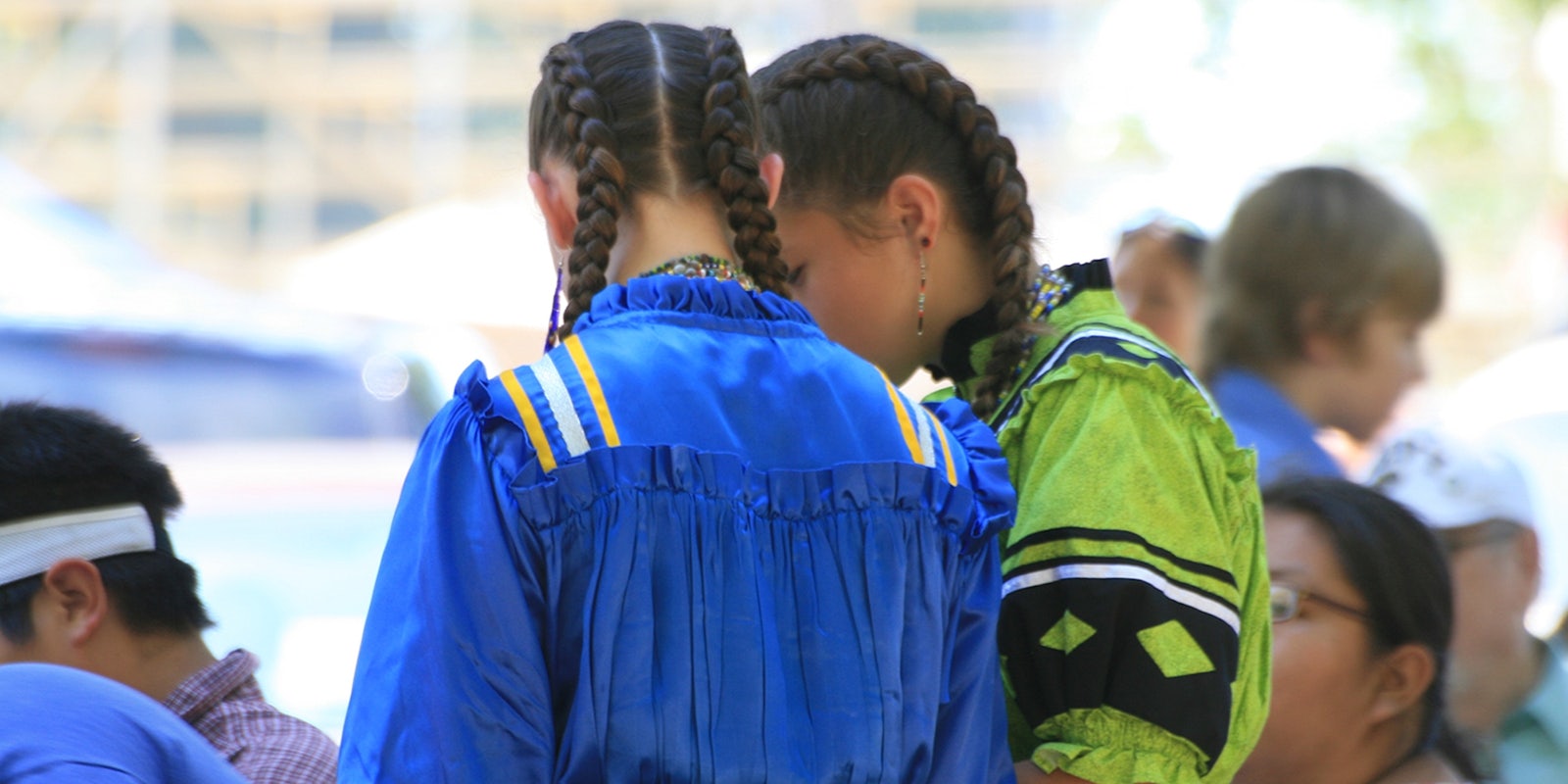Because Hollywood must churn out a new Peter Pan adaptation every five to 10 years, Warner Bros. has announced a green light for Pan, an origin tale already being eyed as a global franchise to rival Harry Potter and Lord of the Rings. Variety reports that Hugh Jackman will play Blackbeard, Garrett Hedlund will play Hook, and yet another hot white person, Rooney Mara, will play Neverland’s Native American princess, Tiger Lily.
Probably hearing cries of “WTF!” from miles away, the studio released a few choice statements to white-splain the situation: “The world being created is multi-racial/international – and a very different character than previously imagined…The studio took on an exhaustive search in finding the right girl to play Lily looking at other actresses such as Lupita Nyong’o and Blue is the Warmest Color thesp Adele Exarchopoulos before going out to Mara for the role.”
This excuse would be laughable if it weren’t so insulting. Yes, Nyong’o and Exarchopoulos are phenomenally talented, and seeing their names on any casting list post-Oscar season is a welcome delight.
However, simply name-checking starlets born in Kenya and France, respectively, does not count as an actual attempt to create a “multi-racial” or “international” character—especially when the studio’s final decision was to play it safe and cast a white woman.
Did Warner Bros.’ “exhaustive search” include auditioning actresses outside of Hollywood’s hype bubble? Or—this might be too much of a stretch—did they even consider a Native American actress for the part?
And how ironic that Mara, born into the wealth and privilege of football royalty—her mother’s family founded the Pittsburgh Steelers and her father’s family founded the New York Giants—would be touted as the “right girl” to play a Native American. If the Washington Redskins can keep its offensive team name and logo, then why can’t white people continue to masquerade in red face, appropriate Native American culture for hipster fashion trends, and celebrate an arguably genocidal “hero” on Columbus Day?
Mara’s casting has been met with mild controversy, but considering the graphic historical and cultural context leading up to this moment, why are we not collectively livid over this?
To those arguing that perhaps Warner Bros. couldn’t find any decent Native American actresses to play the part, allow me to call bullshit.
Exhibit A: The search for a native Maori girl to carry the 2002 film Whale Rider resulted in the casting of Keisha Castle-Hughes, who went on to receive a well-deserved Oscar nomination for Best Actress.
And if “not enough actors” to accurately represent a marginalized group is still the argument you’d like to go with, allow me to point you in the direction of Peter Dinklage and Laverne Cox, who prove that casting great actors in roles that they not only authentically embody but also unequivocally deserve to play is not some impossible feat that Warner Bros. can’t manage.
If HBO has progressed past the old Hollywood trick of shrinking an actor down to play Dinklage’s role (because that would not only be ridiculous but blatantly discriminatory), and if the backlash over Jared Leto inauthentically portraying a trans woman proves there is a demand for more trans actors to share Cox’s spotlight (because it’s about time!), then what’s stopping Warner Bros. from making a more culturally sensitive casting choice?
And in 2014, why do studio executives—also, fashion photographers, magazine editors, and everyone responsible for this Michelle Williams shoot—still not see the problem of putting white people in red face?
Besides viral campaigns like “It’s My Culture, Not a Costume” and spurts of outrage that seem to crop up on social media around Halloween and Columbus Day, issues pertinent to Native Americans are often overlooked in favor of groups with more visible Internet platforms, or communities whose voices, for whatever reason, are more consistently heard, supported, and validated.
Then again, racism against indigenous cultures has become so insidious in modern discourse that sitting “Indian-style” and referring to celebrities as are our “spirit animals” are largely considered non-issues, just as harmless and benign as the whitewashing of the Native American experience from our mainstream films, magazine covers, and history books.
Which also leads me to wonder: Would the majority of Native Americans even want to appear in a film that reinforces their negative stereotypes, especially if the gimmicky roles they’re most frequently offered (Tonto, Pocahontas, Tiger Lily, etc.) are so fundamentally steeped in a white man’s perception of reality?
If a film akin to 12 Years a Slave was made to accurately depict the horrors that their ancestors were forced to endure— that is, not another Lone Ranger, Peter Pan, or similarly Disney-fied minstrel show to cheapen their rich history and culture—maybe then they would be more willing to participate.
Unfortunately, it would appear that Hollywood isn’t ready to change just yet, much less apologize for 500 years of cultural appropriation, mockery, and erasure. And judging from the mostly tepid response to Mara’s casting, not to mention the overwhelming disregard for Native American culture in favor of hipster fashion and hashtags, neither are we.
Leah Pickett is an essayist and regular contributor to the Chicago Tribune. Her work has been published in the Baltimore Sun, WBEZ, and the Daily Press.


